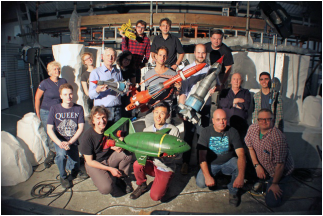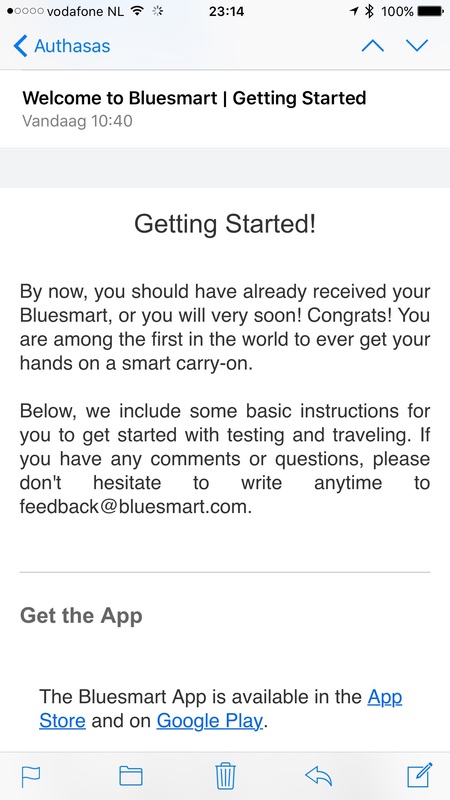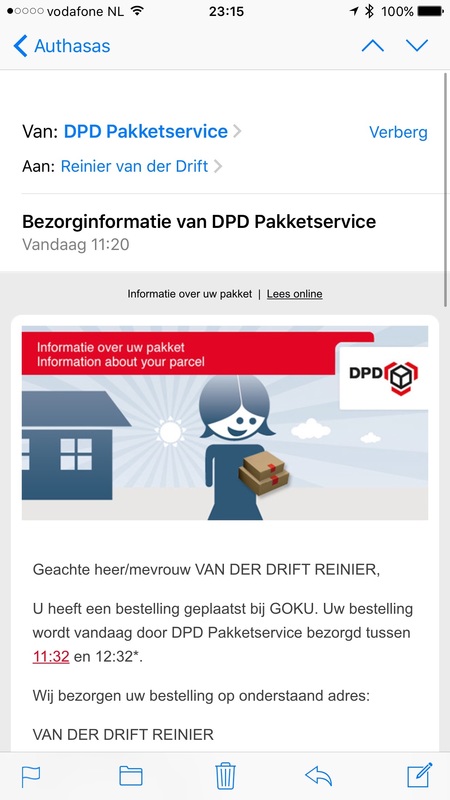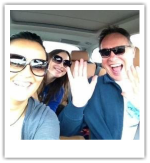|
Last year I ordered a Bluesmart Carry-On. I ordered the second perk, so I coughed up $270 to get myself a IoT all connected carry-on. Today I received the little wonder and here are my first impressions. First of all it started by receiving an email from the Bluesmart-team telling me that the unit was about to arrive, shortly followed by an email of the transportservice that the delivery would be in roughly 1.5hrs. Nice planning and very good communication. I immediately downloaded the app on my iPhone and took another cup of tea, sat down and waited ;-) The packaging was sturdy and the carry-on was delivered in it's dustbag, very handy. The quick-start guide is hardly needed, the setup is quick and easy. Since the carry-on has a rather large battery in the bottom (which is needed for the Bluetooth communication, the electric lock and which can be used to charge your phone) it takes 5-10 hrs to fully charge it. A USB/USBmini cable is part of the delivery and fits almost every phone charger . The carry-on itself is well designed. Since I travel a lot, it's very convenient that you have a separate compartment for your laptop and/or pad which is easily (un)locked electronically via the app. The app shows the battery power level too and of course the location and last but not least the weight of the whole package through the build-in scale. Below a few pictures of my Bluesmart travel compagnon so you can see for yourself how well it looks. The first week of 2016 I will be traveling to the UK. I will let you know how the Bluesmart survived that trip ;-) Till then, enjoy the holidays and cya in 2016!  In a previous post I made you aware of the kickstarter initiative by Stephen La Rivière to re-create three episodes of the famous '60's TV-show Thunderbirds. Yesterday I had the pleasure to visit the set and "be part" of the Thunderbirds revival. I received a warm reception and met the wonderful crew who's bringing this project alive. The director of the original series, David Elliott was there directing , David Tremont came all the way from New Zealand leaving his precious Weta workshop behind ;-) and last but not least Richard Gregory puppeteer, modelmaker and prop maker was there. Not to forget master puppet maker Barry Davies in action. And then of course the "new" crew. A bunch of talented people who put a smile on my face all day long. I had the pleasure of talking to David Elliott and after asking him his feelings and how it was to get back after all those years at the Slough Estate, I asked him about the "Attack of the Alligators" shoot. David, now 84 years old but still going strong, told this little anekdote; The show used real alligators and although they were small, even alligators that size had a nasty bite. The late Derek Meddings was just about ready setting up the models for a shot in the water, when David called to release the alligators in the water. David never saw someone get out of that pool so quickly. While David was telling the story you could see that he relived the moment as he had a bright smile of his face. "The studio is now exactly the same as it was back in the '60's, nothing's changed" he added. I really enjoyed the day and it was an awesome experience to meet people that made much of a difference in my life with their wonderful creations. Thanks again. I've made a couple of photographs at the set of Thunderbirds1965 and posted these below. I hope you enjoy them as much as I do. Every market has it's holy grail. In the strong authentication market it's something called "continuous authentication". It means that the user isn't bothered by typing a PINcode and/or present a card or biometric, the system simply knows it's you. There are a couple of promising techniques that strive to become the holy grail that I'll discuss here: - Behaviosec, a,Swedish startup that delivers keystroke biometric algorithms and - Nymi, a Toronto based startup that measures "the noise" your heartbeat makes to identify you. Behaviosec
Behaviosec developed a so-called behavior biometric algorithm. Basically the algorithm interprets your typing behavior on keyboards/mice and smartphones or tablets, and based on your unique "flight, swipe or touch" times and motions, the algorithm flawlessly identifies you in a short period of time. Usually it takes 1-2 seconds after you starts typing/swiping for the algorithm to make a positive ID. Besides the algorithm, Behaviosec developed a cloud based system which makes it easy for Identity providers to add Behaviosec's technology to their authentication eco-system. This kind of behavior biometrics is often implemented as part of a multi-layer authentication system, that sits behind a website or payment system, to add more security to the accountholder's data. Because the technology is non-intrusive to the user (he simply does what he always did; typing), these technologies are very elegant to implement and often implemented without the user knowing. Nymi It was early 2006 that I was first approached by an investor to give my opinion on an investor paper on "project Heartbeat" as it was called then. I don't know whether or not that old investment proposal is related to Nymi in any way, fact of the matter is that I advised negative at that time. The reason was that fingerprint technology already caused a public debate and in my experience technology like finger-vein recognition basically scared the consumer finger-vein sounded very intrusive (where it actually is not). We're now almost 10 year further. Fingerprint readers are widely exerted by the public (smartphones, biometric passports and so on) and people are not surprised by biometrics anymore. The Nymi algorithm which interprets your heartbeat in order to be able to identify you, finds it's form factor in the Nymi band. You can see a picture above. During enrollment it asks you to touch the band with the other hand so that an ECG can be made on which the algorithm can do it's trick. The Nymi band form factor is chosen so that developers can easily integrate the technology into their systems and applications. It's expected that in the near future the algorithm will be embedded in other devices like smartwachtes and fitnessbands. The two technologies are examples of "continuous authentication". Authentication that is "always-on" and non-intrusive to the user. It simply always works and as part of a layered-authentication-framework delivers the next-gen authentication systems. |
AuthorI am Reinier van der Drift. owner of FERGIL. Serial Entrepreneur & Technology Freak. Expert on Strong Authentication. Archives
February 2016
Categories
All
|






 RSS Feed
RSS Feed